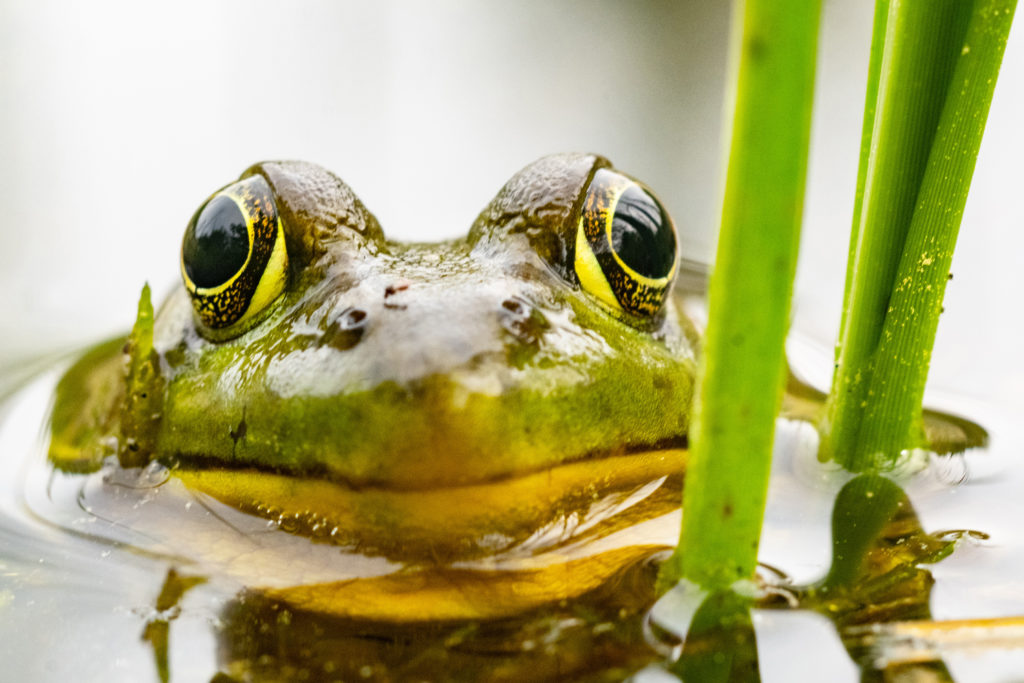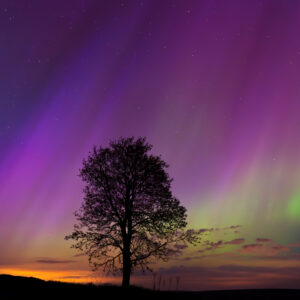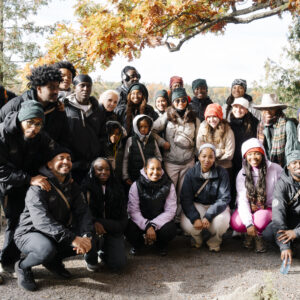Calendar Image: The Green Frog
Tried, True—and Sometimes Blue
The Green Frog (Lithobates Clamitans) should be a welcoming sight to Canadians, especially in Ontario. Classified as a True Frog, their notable traits consist of their green upper lip, large eardrums and spotted, creamy-white bellies. The Green Frog is often confused with its close relatives, the American Bull Frog and the Mink Frog, due to its size and colouring. However, the colours for the Green Frog can vary from greens, browns, blues, or even a combination of all three. This may seem broad but, the easiest way to identify the Green Frog is its two ridges that extend down their backs. Typically, the ridges are slightly raised off their skin and appear dark in colour. Green Frogs are more complex creatures than what’s seen at first glance!
Their voices are also just as decorated. With their call sounding more like a banjo string being struck (Gunk!) than the familiar ‘ribbit’. Echoing across the pond, these calls are distinctive and unique. The largest Green Frog to be recorded was a mighty 10.8 cm’s long! These North American residents’ size makes it easier to spot them on your next nature walk—if you haven’t already witnessed them singing.

Green frog at eye-level-Michel Caron
Eco-Friendly Pest Control
The Green Frog has plenty of favourites when it comes to their diet, slugs, spiders, and sometimes other smaller frogs. Any insect, walking or flying, is a tasty morsel for an adult Green Frog as well. All of these factors makes the Green Frog a specialist in pest control. They use their senses for getting meals and have no shortage of options. The Green Frog has especially large eardrums next to their eyes. They use these big ears to hear, but for the observer, it’s the simplest way to identify if they’re male or female. The male frog’s eardrums are clearly larger than their eyes. On the other hand, the female’s eardrums will be closer to the equal size of their eyes. This is the main difference between the two sexes.
Males and females will get together to mate once a year between June and August. This is a sensitive time for the male frog, making him overly territorial and charging at any competition. The female will lay anywhere from 1000-5000 eggs during this time, with the eggs hatching into tadpoles in under a week’s time. These young tadpoles will take two years to fully develop into a mature frog. Hibernating is a must for the tadpoles, as well as the adults. Through our chilly winters they’ll find refuge underneath the mud below the frozen waters’ surface.
An Eastern Icon
Green Frogs are found across the eastern side of the country— and in abundance! From Manitoba all the way to Newfoundland, they’re iconic in our aquatic ecosystems. Green Frogs are highly adaptable, so long as they have a permanent water basin to call theirs. But, the loss of aquatic habitats will leave these charming Green Frogs without a permanent home. The Green Frog’s current population is an excellent example of what efforts for conservation can achieve. Having wetlands and rivers protected allows the Green Frog to flourish. Lac Saint Francois is a perfect example of how conserving our wetlands and waterways benefits an entire ecosystem. Located in Dundee, Quebec, this place is a frog’s paradise. For more information on how to visit these spectacular reserves, go to canada.ca and find a National Wildlife Area near you.



